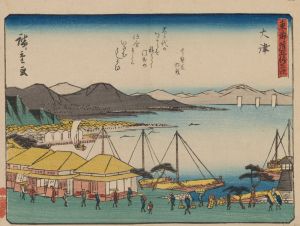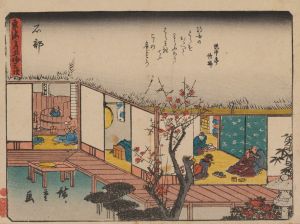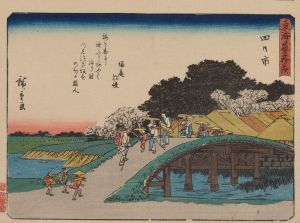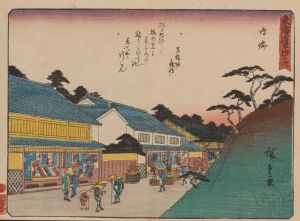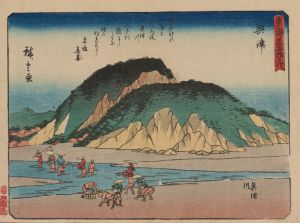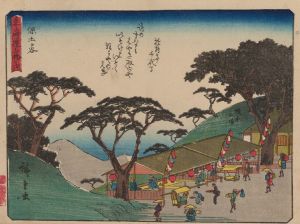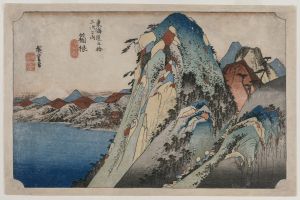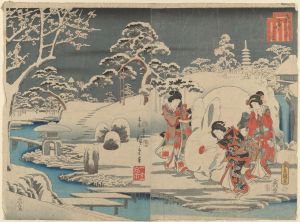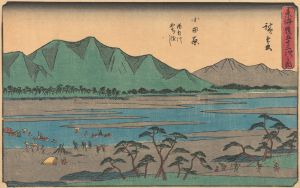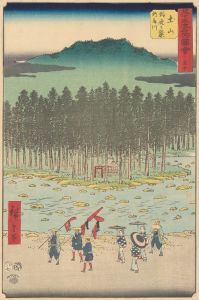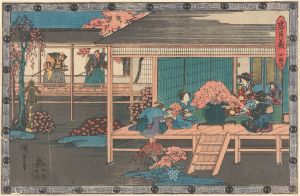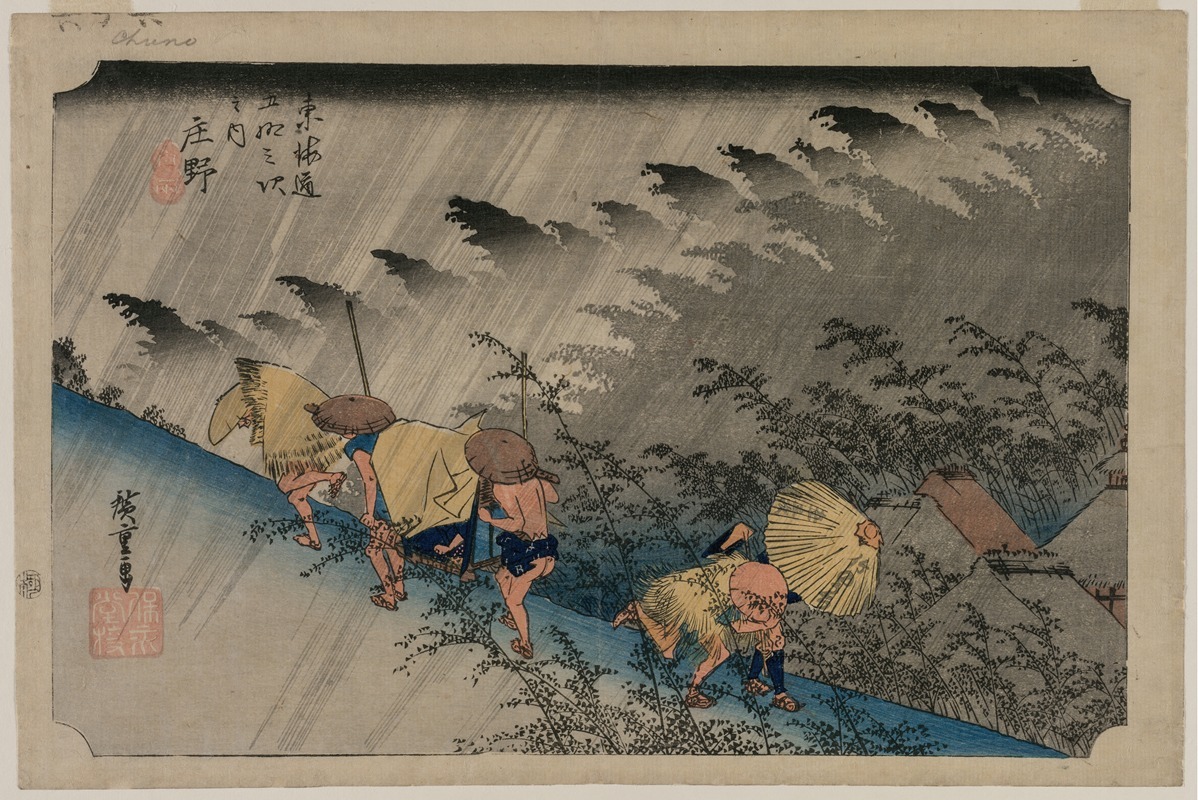
Driving Rain at Shono from the series Fifty-Three Stations of the Tokaido
A hand-painted replica of Andō Hiroshige’s masterpiece Driving Rain at Shono from the series Fifty-Three Stations of the Tokaido, meticulously crafted by professional artists to capture the true essence of the original. Each piece is created with museum-quality canvas and rare mineral pigments, carefully painted by experienced artists with delicate brushstrokes and rich, layered colors to perfectly recreate the texture of the original artwork. Unlike machine-printed reproductions, this hand-painted version brings the painting to life, infused with the artist’s emotions and skill in every stroke. Whether for personal collection or home decoration, it instantly elevates the artistic atmosphere of any space.
"Driving Rain at Shono" is a woodblock print by the Japanese ukiyo-e artist Andō Hiroshige (1797–1858). It is part of his renowned series "The Fifty-Three Stations of the Tōkaidō" (Tōkaidō Gojūsan-tsugi), which was first published in 1833–1834. This series depicts the 53 post stations along the Tōkaidō, the main travel route connecting Edo (modern-day Tokyo) and Kyoto during the Edo period. The series is celebrated for its vivid and poetic portrayal of landscapes, weather, and daily life in 19th-century Japan.
"Driving Rain at Shono" specifically represents the Shono-juku station, one of the 53 post stations along the Tōkaidō. The print captures a dramatic scene of travelers caught in a sudden downpour. The composition shows figures hurrying along a sloping path, some shielding themselves with straw hats and umbrellas, while others are bent forward against the force of the rain. The heavy rain is depicted with diagonal lines streaking across the image, creating a sense of movement and urgency. The surrounding landscape, with its trees and hills, is rendered in soft tones, emphasizing the atmospheric effects of the storm.
Hiroshige's use of perspective and his ability to evoke mood through weather and light are evident in this work. The print exemplifies his mastery in combining natural elements with human activity, a hallmark of his artistic style. The scene is both dynamic and intimate, offering a glimpse into the challenges of travel during the Edo period.
The "Fifty-Three Stations of the Tōkaidō" series was highly popular during Hiroshige's lifetime and remains one of his most famous works. It reflects the cultural and historical significance of the Tōkaidō route, which was a vital artery for commerce, communication, and travel in Japan. The series also demonstrates the technical and artistic achievements of ukiyo-e woodblock printing, a genre that flourished during the Edo period.
"Driving Rain at Shono" is often praised for its ability to convey the sensory experience of being caught in a rainstorm. It is considered one of the standout pieces in the "Fifty-Three Stations of the Tōkaidō" series and a prime example of Hiroshige's skill in capturing the transient beauty of nature and human life.





